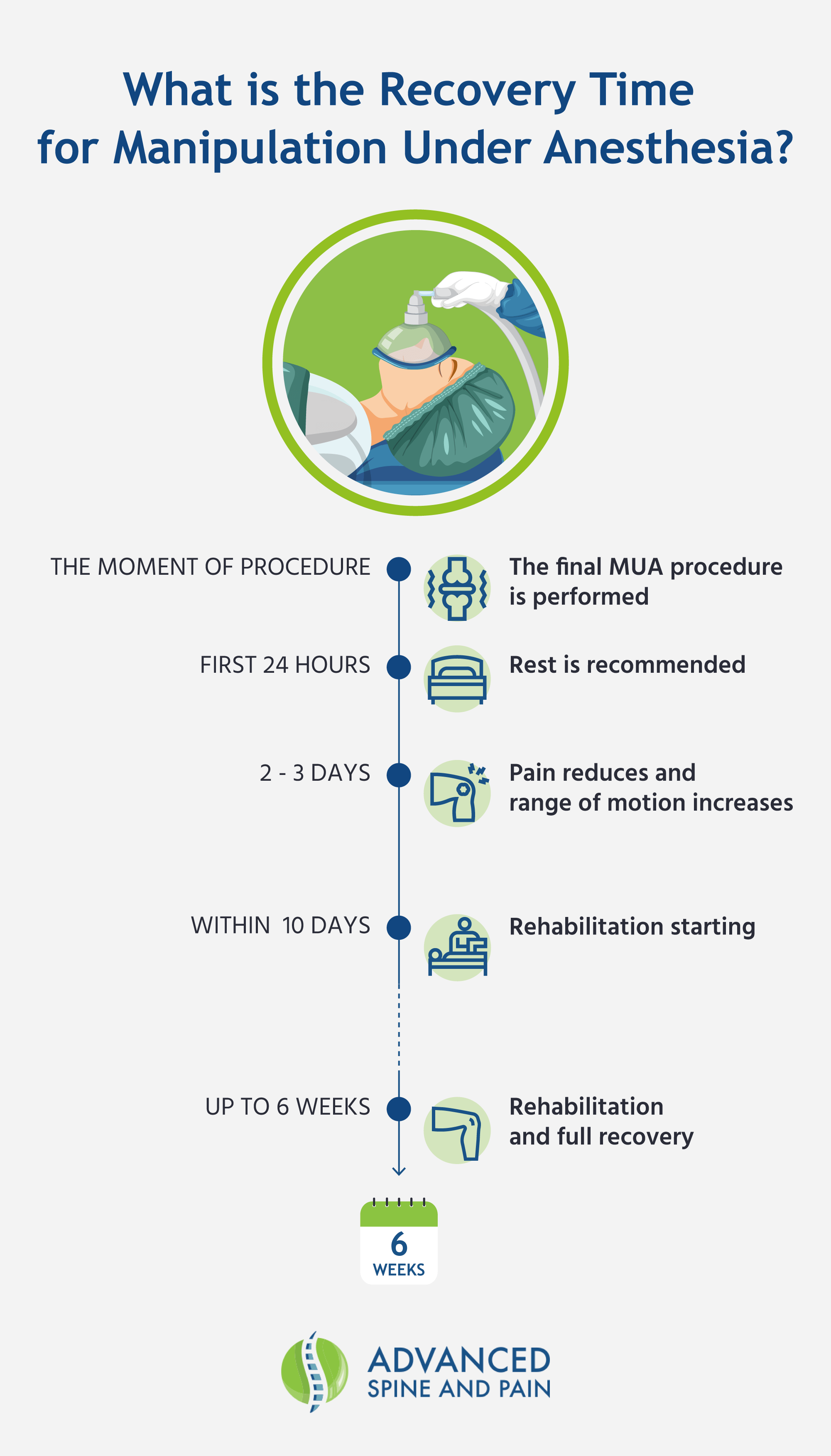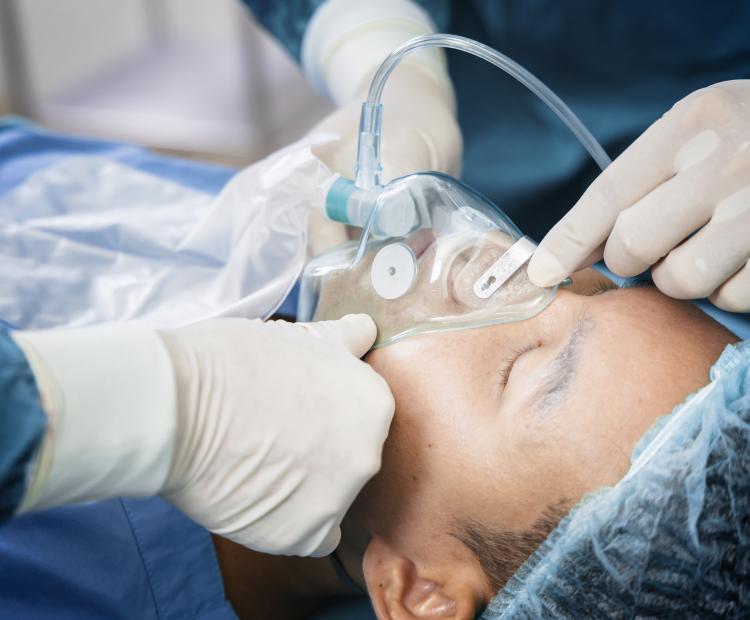Chronic pain due to muscle spasms or scar tissue can often interfere with movement, everyday activities, and quality of life. If conservative treatment approaches like stretching, exercise, and physical therapy have failed, your healthcare provider or pain specialist may recommend manipulation under anesthesia (MUA) to help reduce pain and regain range of motion.
Before choosing a procedure like MUA, it’s important to understand why and how it is performed, as well as what recovery time you can expect.
At Advanced Spine and Pain, our specialists are available to answer any questions about manipulation under anesthesia. To learn more, call us at (480) 573-0130 or contact us online.
What is Manipulation Under Anesthesia?
Manipulation under anesthesia, or MUA, is a non-invasive procedure done at a hospital or outpatient clinic that allows a healthcare provider to break up scar tissue and adhesions in muscle, around joint capsules, or around nerve roots. By stretching and moving targeted areas while a patient is under anesthesia, the provider can increase the range of motion without causing pain during the procedure.
Although an MUA procedure uses anesthesia, it is not surgery. There is no incision and no surgical wound to heal. You will be carefully monitored throughout and afterward in a recovery room, just as you would be for any other procedure involving sedation. After your team feels you are ready, you will be discharged home.
What Can I Expect After Manipulation Under Anesthesia?
Manipulation under anesthesia is just one part of a treatment plan. After recovery from the procedure, other steps must be taken for MUA to be fully effective. The rehabilitation period after MUA will be personalized to your needs and involves a combination of heat and massage, physical therapy, ultrasound therapy, and possible repeat MUA procedures to continue improving your range of motion and decreasing pain.
What is the Recovery Time for Manipulation Under Anesthesia?
The recovery time for MUA depends on each person and their medical history. Right after the procedure, you may experience swelling, some discomfort, and bruising. During exercises prescribed by your healthcare team, you may also experience some discomfort as the area begins to stretch more freely. Severe or persistent pain is abnormal and should be reported to your doctor immediately.
Overall recovery time will depend on whether your MUA procedure needs to be repeated (and how many times it’s repeated). Usually, it’s recommended to rest for the first 24 hours after the procedure, with rehabilitation starting within a week to 10 days. Anti-inflammatory pain medication may be recommended to reduce temporary discomfort. Most patients' initial soreness should improve after a few days, followed by reduced pain and increased range of motion.
Rehabilitation and full recovery from manipulation under anesthesia can extend six weeks beyond the final MUA procedure. This is true whether discussing recovery time for the knee, shoulder, or other target areas.

Other FAQs about MUA
How many times can MUA be repeated?
Manipulation under anesthesia may be repeated between 2-4 times depending on the progress toward improved range of motion and decreased pain.
How effective is MUA?
Manipulation under anesthesia has a high success rate, with 80-97% of patients1 experiencing significant improvement.
Who can benefit from MUA?
Common reasons to consider manipulation under anesthesia include after total knee replacement (TKR) or other joint surgeries, after failed back surgery, to address recurrent sprains, and more. Your pain specialist can review your medical history, injury history, and MUA’s potential risks to help you decide if MUA is right for you.
Considering Manipulation Under Anesthesia?
If you think manipulation under anesthesia may be a good pain management solution and improve your ability to move more freely and enjoy your life, the pain management specialists at Advanced Spine and Pain are available to review your options. They can also support you through the recovery process with services like physical therapy and a comprehensive plan of care to help ensure MUA is as successful as possible. Contact us online today for expert advice from our team, or call us at (480) 573-0130.
References
- Gordon, R., Cremata, E., & Hawk, C. (2014, February 3). Guidelines for the practice and performance of manipulation under anesthesia. Chiropractic & manual therapies. https://www.ncbi.nlm.nih.gov/pmc/articles/PMC3917622/#B14
- Log in to post comments

